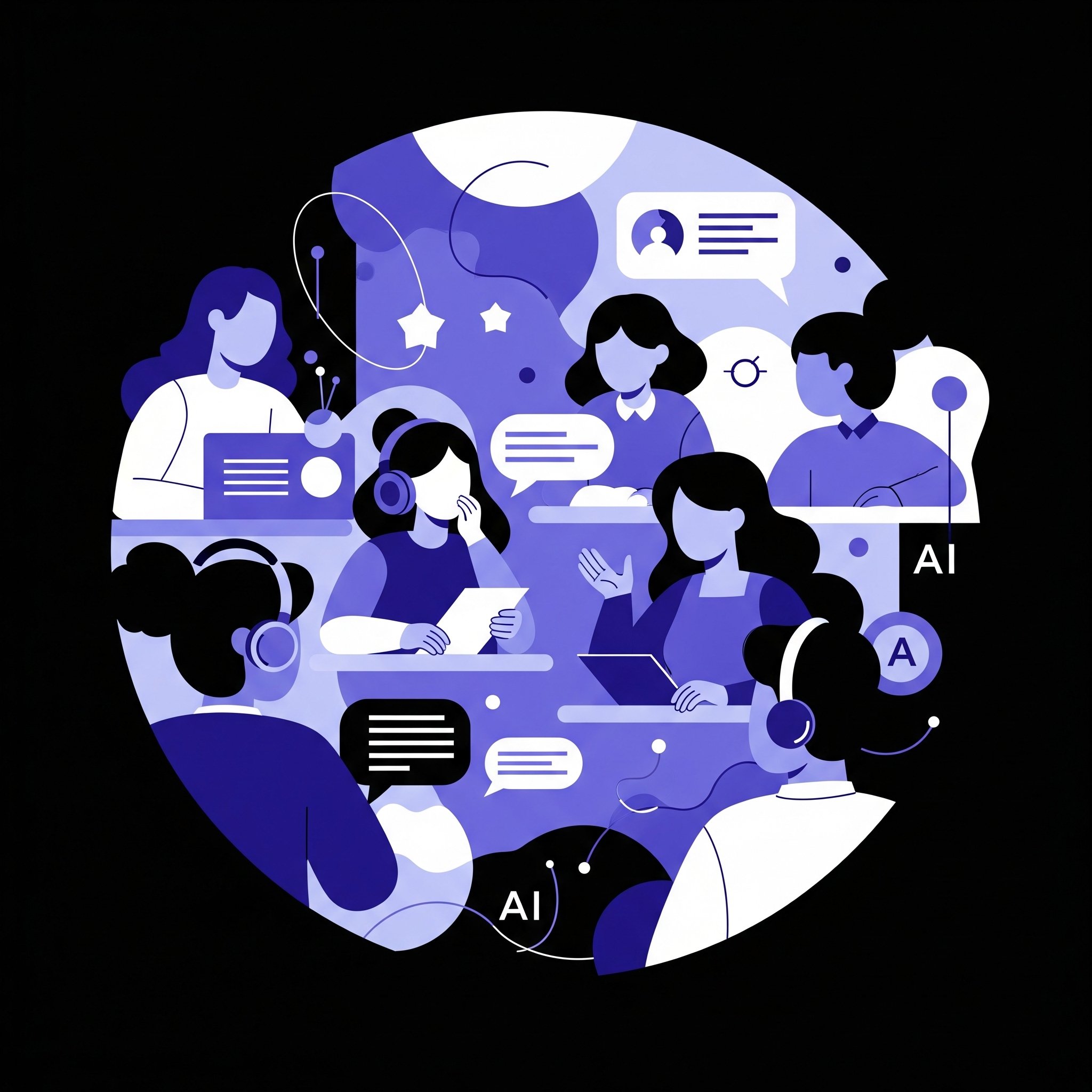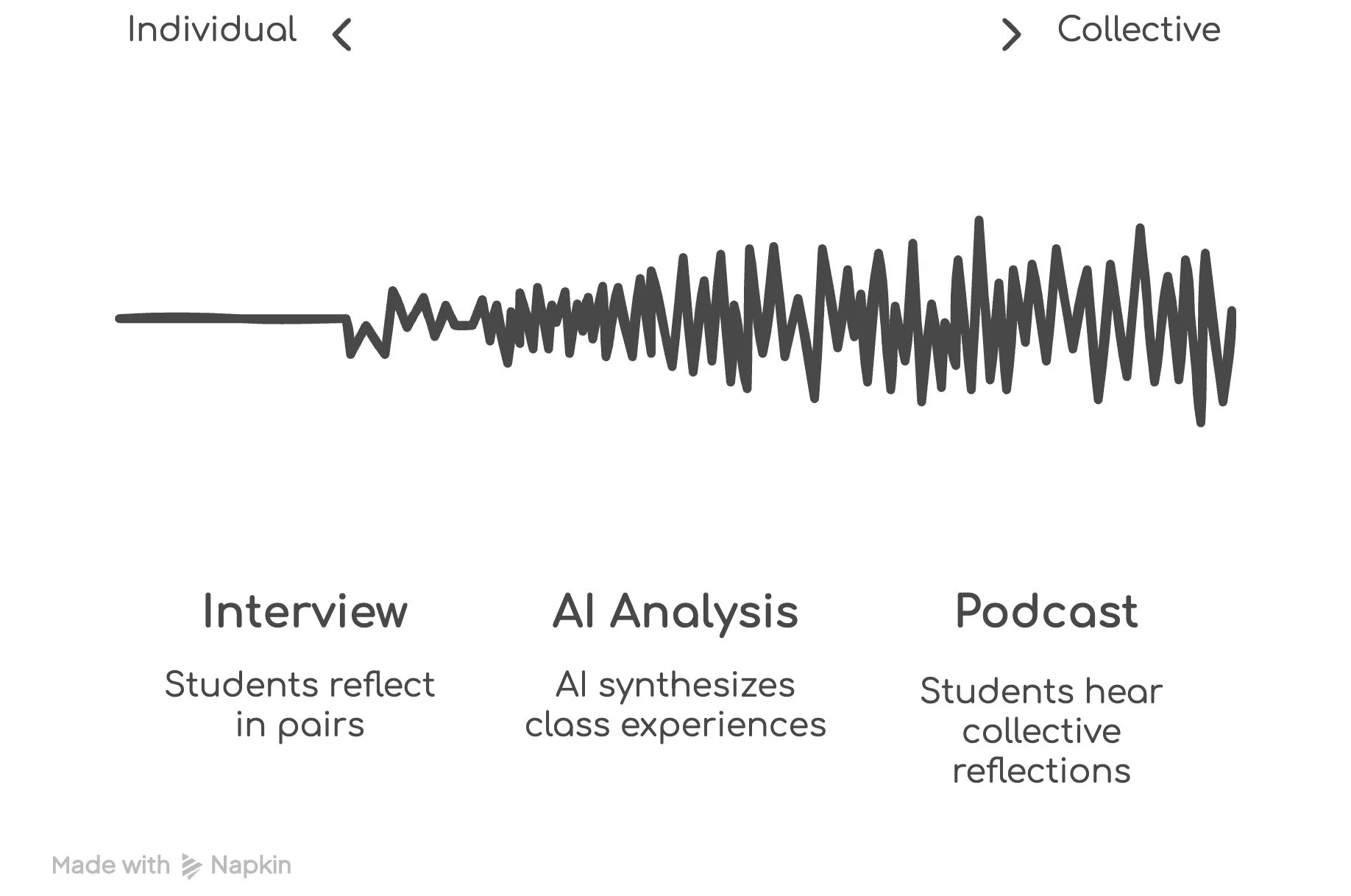As design educators, we recognize the importance of reflection. It's not just an IB requirement; it's a fundamental skill that enables students to articulate their learning, comprehend their development beyond just project outcomes, and identify areas for future improvement through self-assessment. However, how can we encourage students to move beyond perfunctory written reflections and truly engage in a meaningful process?
This past year, with my IB DP Design Technology Year 1 students, I piloted an activity that combined peer-to-peer conversation with emerging AI tools, and the outcomes provided valuable insights.
The Reflection Activity: Facilitating Conversation
My objective was to create an environment where students felt comfortable sharing their design journey, including both successes and difficulties. Instead of requesting another written report, I structured an interview activity:
I provided students with a series of interview prompts intended to prompt reflection on their first year in DP Design Technology. These prompts explored:
What were your biggest challenges this year and how did you approach them?
What were your key successes or breakthroughs in your design projects?
In what areas do you feel you've shown significant growth as a designer?
What specific skills or knowledge areas do you want to grow in next year?
What was one surprising thing you learned about yourself during a design project?
Students then paired up and interviewed each other using these prompts. They recorded these interviews as videos and then shared them directly with me. This independent recording fostered a relaxed and open atmosphere, facilitating authentic conversations.
From Individual Reflections to Collective Understanding
After reviewing the interviews, I sought to gain a broader understanding of the class as a whole, and this is where AI enhanced the process. Once all the videos were submitted, I uploaded them into NotebookLM. (For those unfamiliar, NotebookLM is an AI-powered research and notetaking assistant that can summarize and synthesize information from various sources.) NotebookLM analyzed all the interview transcripts, identifying key themes, recurring challenges, and shared successes. It did not merely transcribe; it generated a comprehensive summary of the collective class experience. It highlighted common themes, shared challenges, and recurring successes, providing a comprehensive overview of my students' year. While this information was good for me, as the teacher, to gain insight into the class, I wanted to share these insights back with the students - This is where I asked NotebookLM to use the synthesized data to generate a podcast to share with the students.
The Podcast's Impact: Shared Understanding and Insights
I shared this AI-generated podcast with the students as part of their final reflection. Their reaction was positive. Hearing a summary of their collective experiences, narrated in an engaging podcast format, was well-received.
Check out the summary below:
Students commented on how comforting and affirming it was to hear that their peers shared similar successes and struggles. This validated their individual journeys within a collective experience. It shifted what could have been a solitary reflection into a shared understanding of their first year in DP Design Tech. It also offered an objective, AI-driven perspective on their progress, providing insights they might not have gained from individual written reflections.
Benefits of This Approach
Authentic Voice: Students spoke naturally, unburdened by the formality of writing, leading to more honest reflections.
Peer Connection: The interview format fostered empathy and understanding among classmates.
Teacher Insight: The AI summary provided a holistic view of the class's learning journey, highlighting trends and common needs that could be addressed in future planning.
Engaging Feedback: The podcast format was novel and engaging for the students, making the final reflection feel less like an assessment and more like a shared narrative.
Efficiency: While initial setup required time, the AI significantly reduced the teacher workload in synthesizing key themes and common threads from numerous individual reflections.
Next Steps: Refining and Expanding
This activity was successful, and I am considering how to refine it for next year. I aim to:
Integrate Mid-Year Check-ins: Potentially a shorter version of this activity mid-year to allow for course correction and more immediate reflection on ongoing projects.
Student-Generated Prompts: Encourage students to contribute to the list of interview prompts, granting them increased ownership of the reflection process.
Targeted Feedback: Utilize the AI-generated insights to inform more personalized feedback for individual students, address common themes in class discussions, or tailor future units based on identified areas for growth.
Refection ranged from the individual to the whole class.
Embracing tools like NotebookLM is not about replacing the teacher; it is about amplifying our ability to understand and respond to our students' learning needs in innovative ways. This reflection activity served as a valuable reminder of how technology can genuinely enhance the human-centered process of learning and development in design.


